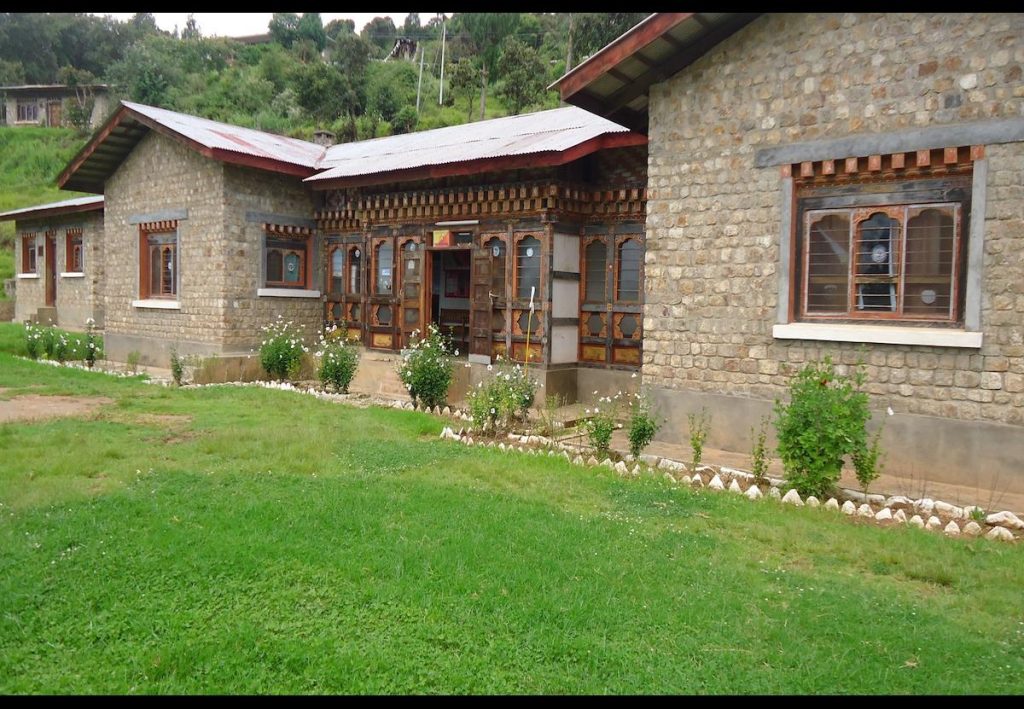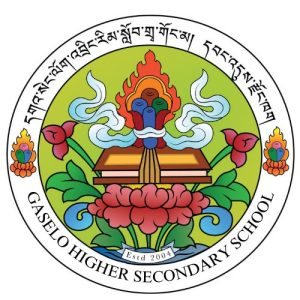Gasetsho Gom
Gewog administration, Gase Tshogom is situated in the northern part of Wangdue Phodrang Dzongkhag which is 18 kilometers away from Dzongkhag headquarter. It has a total area of approximately 276 square kilometers with the altitude ranging from 800-2800 meters of sea level.
The climatic is typically dry sub-tropical from hot summers to cold winters.
According to the 2017 Population and Housing Census of Bhutan (PHCB), the gewog has a population of 2,026, comprising 982 males and 1044 females. The gewog includes 12 villages, spread across 216 households, with settlements scattered throughout. Agriculture is the primary occupation, with residents cultivating crops such as rice, maize, wheat and various vegetables, with rice being the staple food.
Like any other gewogs, Gase Tshogom too is governed by a Gup, elected for a five year term, supported by Local Government (LG) members known as Tshogpas (people’s reprentative) and civil servants. The gewog is divided into five chiwogs, each represented by a Tshogpa, responsible for two to three villages. The gewog administration focuses on implementing developmental activities aligned with national mandates in addressing, enhancing rural communities.
The gewog collaborates closely with the dzongkhag (district) administration and other government agencies to ensure effective service delivery including education, health, agriculture, and infrastructure development. The Gewog also has a Gewog Tshogde, a local government council conducted quarterly amongst elected members to engage communities in decision-making processes to work and expedite in larger interest of the public. Some of the core values such as promotion of sustainable development, preservation of cultual heritage, and improving the quality of life are the guiding principles for any developmental activities undertaken by gewog administration.
Educational institutions in the gewog include primary and secondary schools along with a primary healthcare center, local monastries, RNR center, and a private eco-lodge. The local economy is primarily agrarian, with paddy production being significant for both local consumption and income. The gewog also produces vegetables and fruits like oranges and pears, which contribute to the conomy. Animal husbandry, including the cattle, poultry and pig rearing, is also vital.
Gasetsho Gom Gewog is rich in cultural heritage, with several religious structures, including monasteries and stupas. Annual religious ceremonies, such as mani-dungdrup at Matshipogto Lhakhang and rituals at Shalipangkha Lhakhang, are significant events that bring the community together to reinforce their faith and spiritual heritage.
However, the gewog faces challenges related to water scarcity, which impact daily life, agriculture, and overall well-being of the community. Water scarcity, coupled with unreliable supply and climate change, affects crop yields, food security and livelihoods. The gewog aims to capitalize on future opportunities by focusing on agriculture, horticulture, organic production, and improved animal husbandry to enhance local and export markets.
Chiwog and its Population Statistics
|
Gewog |
Chiwog |
Households |
Female |
Male |
Total Population |
Empty households |
|
Gasetsho Gom |
Changchey Pangsho |
53 |
259 |
233 |
492 |
1 |
|
Changkha Pasakha |
36 |
173 |
169 |
342 |
0 |
|
|
Dabcheykha Matshikha |
54 |
267 |
253 |
520 |
1 |
|
|
Khamaedna |
41 |
166 |
173 |
339 |
1 |
|
|
Khatoedkha |
32 |
179 |
154 |
333 |
0 |
|
|
|
TOTAL POPULATION |
216 |
1044 |
982 |
2026 |
3 |
Institutions
Staff





Tourism
No tourist destinations in this Gewog.
Contact us
- Dzongkhag Administration Wangdue Phodrang, Bhutan
- Dzongdag Post Box No: 1305
- PABX:02-481408/02-481686
- Fax No: 02-481380


